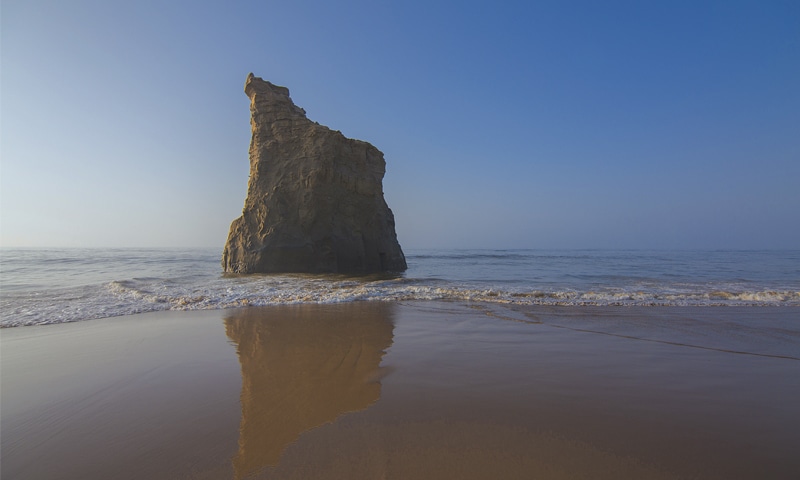One of the greatest gifts that any government can give its people is designating and preserving its national parks. Urban centres in Pakistan are devoid of a healthy balance between nature and concrete.
Pakistan has 1,046km of coastline — a major part of which is in Balochistan. Most of our beaches remain isolated and unexplored. Perhaps that is a good thing, as it has given the local wildlife freedom to live naturally. It would have been possible on the beaches in Karachi, had there been no human interference.
Travel photographer Sohaib Roomi had been planning to head to this little strip — a desolate part of beach — at the end of Sapat Bandar Beach on the Makran coast for some time now. Some of the locals he had met at the Hingol National Park in his travels had told him about it. It’s a little hard to get there as the road becomes exceptionally bad. With mobile signals ending shortly after the Makran Coastal Highway begins, the only way to know its exact location is through its GPS coordinates. That is probably how it ended up getting tagged on Google Maps, but the maps won’t be able to show you a clear route to the spot. “We can use Sygic [an offline maps app] but there’s still no proper route marked,” says Roomi.
A small stretch of beach on the Makran coast still remains mostly unexplored
The closest landmark is that it’s an hour away from Chandragup — the mud volcano revered and held sacred by the local Hindu community and which is a popular spot for local tourists and the astronomy club.

“It’s all off-road and you need to make your own way,” says Roomi. “But there is a rough track next to the mud volcanos that also leads up to Sapat.” Sapat is a ‘long’ sandy beach in the vicinity. “We drove over plains, that’s all you see for around five to seven kilometres. We just made sure we were headed south and eventually, we ended up on the beach. This is the strategy you can use in case you’re headed there at night.” The terrain can get ‘wet’ warns Roomi, as you’re sometimes driving over dry river beds. “There’s no way possible to go there during the rainy season,” says the photographer. “You will need another route because this one will be flooded.”

This little strip of heaven is at the very end of the Sapat Bandar Beach.
Desolate and wild, this is home to a curious rock formation called Bujih Koh — a steep cliff rising from the sand entirely on its own. It’s separate from the cliff wall that stretches along the coast straddling the beach between its rocky embrace and the sea. Bujih Koh’s base is covered by the incoming tide.

The entire beach is home to a healthy colony of crabs. Roomi isn’t sure what type, except that “they’re light in colour and large in size.” Not surprisingly, they have no fear of predators and can grow as big as they want. Dens burrowed by the crab dot the beach, but as they are shy by nature, they quickly scamper away if you try to approach them.
Desolate and wild, the beach is home to a curious rock formation called Bujih Koh — a steep cliff rising from the sand entirely on its own. It’s separate from the cliff wall that stretches along the coast straddling the beach between its rocky embrace and the sea.
Another interesting feature about this beach is that there are some caves on the cliffs. “I couldn’t explore them,” says Roomi. “I’d love to go back and take a look at what’s inside.”

Winter is the season for sea sports in Pakistan. While summer brings strong winds, high tides and rough seas, in winter the Arabian Sea along the coast of Pakistan is calm — sometimes enough to give it a stunning tropical turquoise colour. Far away from concrete human settlement and light pollution, the beach is an entirely different entity at night. On full-moon nights, when the rays strike the surf of the incoming waves, they almost seem to glow. The phenomena of bioluminescence, often seen in National Geographic photos of beaches far, far away is here, closer to home.
The writer is a member of staff. She tweets @madeehasayed
Published in Dawn, EOS, October 29th, 2017












































